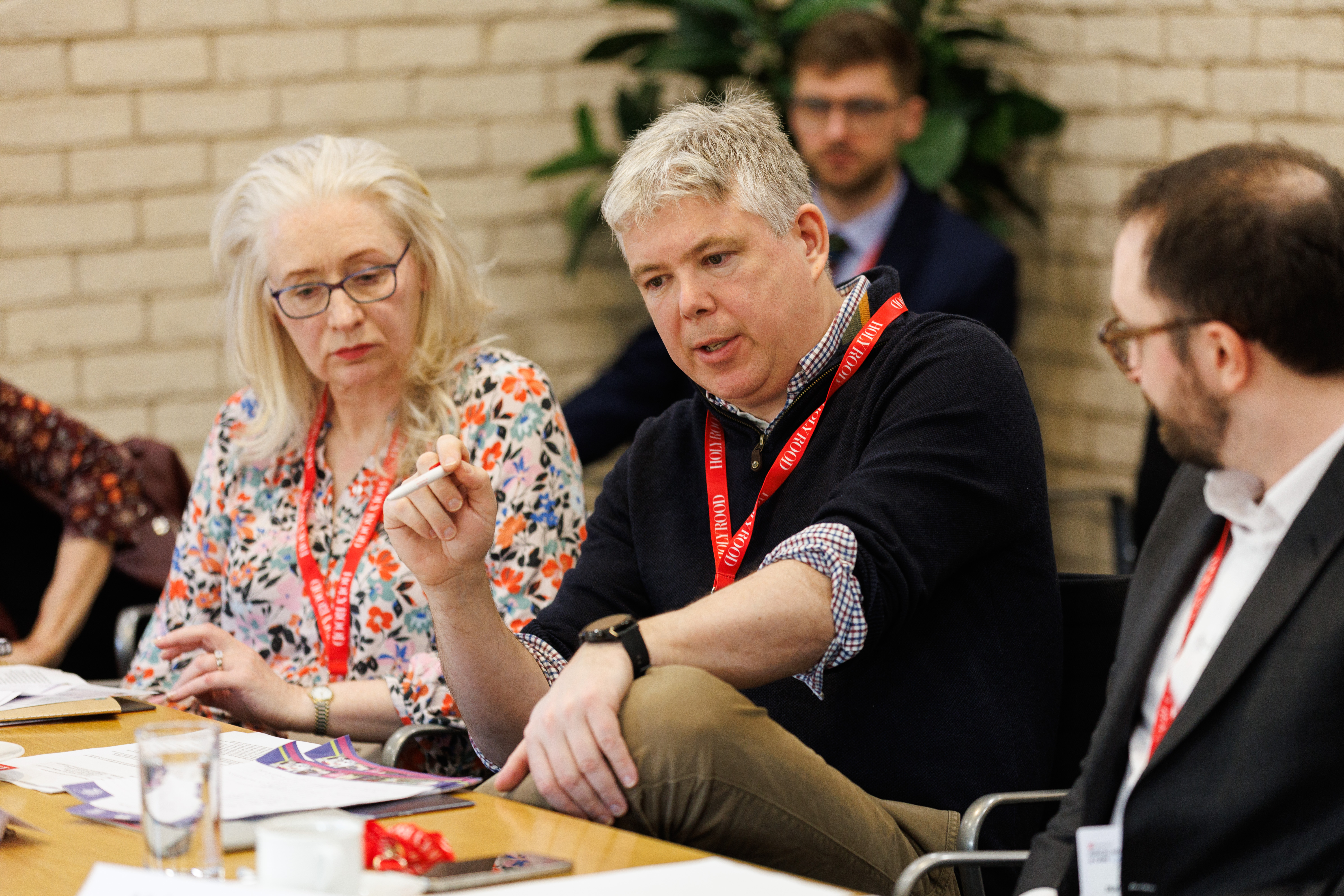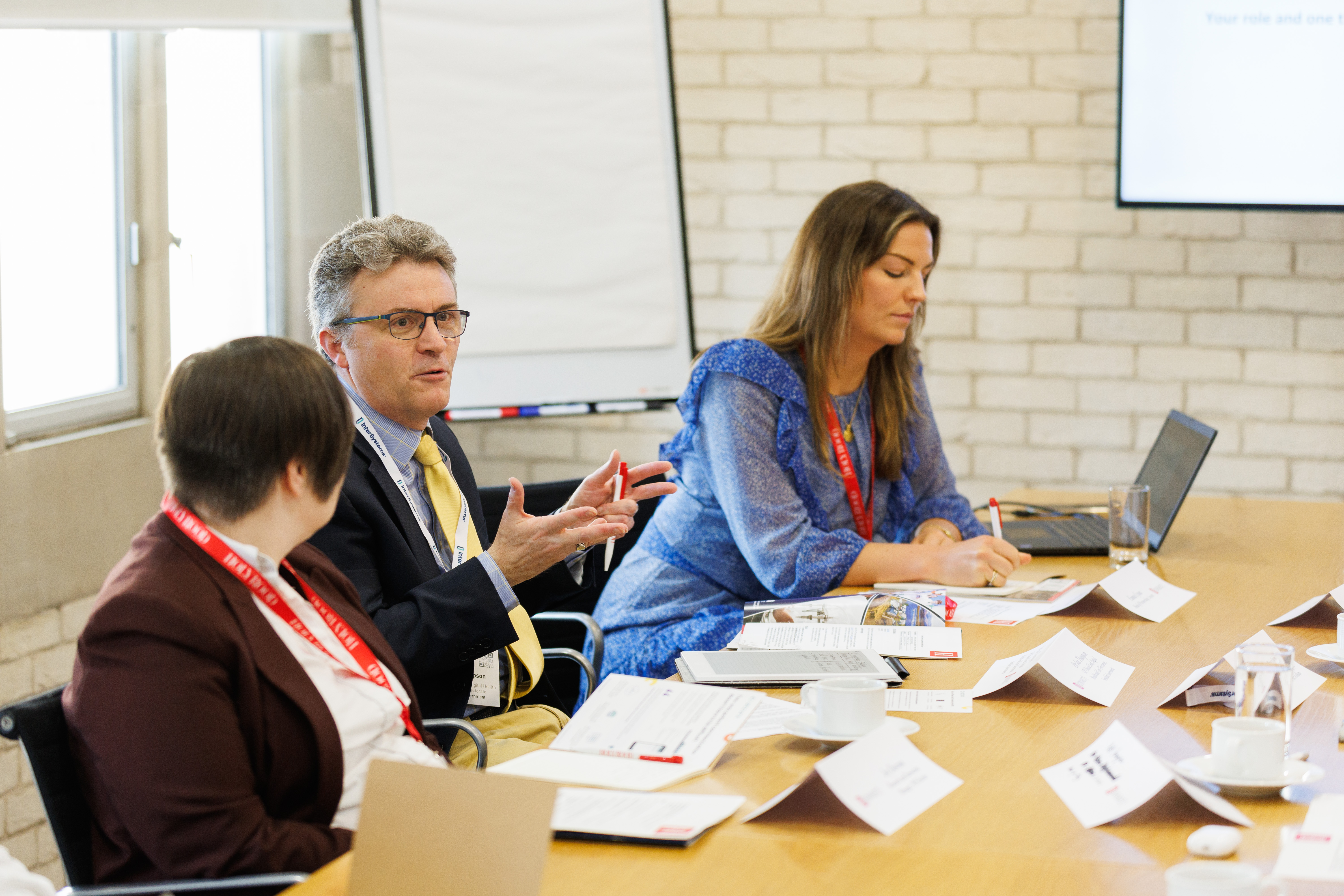Tech
Stabilising primary care in Scotland through technology

How digital innovation can save our struggling health and care system
Our health and care workforce is at breaking point. Over the past decade, Scottish GPs have faced higher workloads and a cut in resources. With staff leaving the NHS and waiting times running high, the system is on the verge of collapse. Last month, an Audit Scotland report warned Scottish ministers had to produce a “clear national strategy for health and social care” and make “significant changes” or the NHS would consume “an ever-growing chunk of the Scottish budget.”
Amid this crisis, Holyrood and Accurx gathered health professionals at Dynamic Earth to discuss how technology could be used to take the burden off our health and care workforce.
Topics included improving capacity and managing demand through digital communication, using collaborative working to support population needs, and deploying technology at scale.
Accurx provides a platform for healthcare professionals across care settings to communicate with patients and with each other. Its software allows for streamlined patient care by providing a shared place of communication for everyone. The organisation’s product has reached numerous milestones, including driving a 10x ROI for ICBs in England due to GP practice DNA reduction and staff time save, and it is currently used by 98 per cent of GP practices in England.
Among the Accurx solutions are questionnaires, messaging templates and triage forms for healthcare staff to screen and monitor patients. These forms help staff to manage their workload and manage patients asynchronously by allocating care according to answers received, managing long-term conditions such as diabetes and reducing the frequency of inbound calls and walk-ins.
Kicking off the debate, Joy Dawson, research and innovation manager at NHS Borders, drew attention to the danger of leaving people who cannot use digital solutions behind. She focused on the risk posed by Scotland’s ageing population – the Scottish Household Survey revealed fewer than half of those aged 75 or over used a smartphone to access the internet.
Discussing a recent project she took part in which trailed the use of online questionnaires for patients to self-assess their pain following surgery, Dawson said it was “surprising” to see the amount of people who didn’t own a smartphone, “particularly in rural areas”.
Joy Dawson | Andrew Perry
However, Dr Paul Nelson, primary and social care public health consultant for the clinical and protecting health directorate at Public Health Scotland, warned that we must strike the right balance between both groups so opportunities are not missed.
“There is always this danger of leaving people behind and, quite rightly, we must be very careful about digital exclusion. However, there is also the really important part of not missing out, because there are not even two sides to this debate. It’s 92 per cent of those who own a smartphone in Scotland versus eight per cent who do not. And it’s really important to talk about that eight per cent, but also not to hold back innovation because of it.”
Marc Beswick, digital education and adoption lead at the Scottish Government, also warned that stereotypes associated with an ageing population might not be a true reflection of reality and highlighted the need for effective communication to design a reliable approach to patient care.
“We need to guard against making assumptions about the kinds of people who want to interact with digital. It is not necessarily a certain age group or a certain demographic. We’ve got numerous stories of people that we thought perhaps wouldn’t want to or couldn’t engage with digital, but actually do. So, the important side is to have that conversation to say, ‘what’s your preferred medium?’ and build services from there.”
Matt Honeyman, head of policy at Accurx, said digitising health and care could in fact benefit those who are digitally excluded because it would allow professionals to save time and that time can be redirected to those who need it. “Digital saves time to work with those who can’t be included that way, as it frees up the schedule to do the kind of proactive outreach to these patients.”
Another matter which divided opinion was where to strike the balance between digital and face-to-face care. Professionals said relying on digital was a “total culture shift” for them, as one of the reasons they chose their profession was the human element associated with it.
However, when asked about how digital-first consulting had changed his relationship with patients, Dr Dave Triska, GP partner and Accurx user – who pioneered this approach in his practice in Surrey in 2018 – said it had made it more “natural” and “friendly”.
“Most people have previously had a terrible experience with digital. One patient said it used to be like Dragon’s Den – in about 10 minutes, you had to get your point across to get treated.
“Now, as that conversation has already happened through a two way digital conversation, what we find is that when people land their appointments they feel heard, as they’ve been given the chance to explain how they feel.
“Thanks to this information, GPs can then sit down with patients for 15 to 45 minutes, depending on the need. And because we’ve got that capacity, our standard waiting times for our GP online consultation is 30 minutes, with two hours for a GP face-to-face appointment.”
Currently in Scotland, the average median time for a GP appointment is one week, with this rising significantly in central belt practices.
Another obvious point of concern was the thin line between technology exacerbating chaos and organising care. Dr Peter Cairns, GP and clinical advisor for the digital directorate at NHS Lothian, argued that without a single front door, digital can “destroy pathways”.
“We then have the digital front door, the telephone front door and the actual front door – now you’re on to system collapse. There must only be one front door. In other words, we must be agnostic about how the information gets collated, but it must all come to the same place.” Dr Peter Cairns | Andrew Perry
Dr Peter Cairns | Andrew Perry
Erika Skinner, programme manager for remote health pathways at NHS Grampian, agreed by arguing that digitally-powered patient triaging can become a hindrance unless the approach is secure by design. She explained that opening multiple communication channels can put even more pressure on health and care services.
“I’ve seen practices trying to toss [digital triaging] after they started doing it 24/7 as they suddenly found demand absolutely ballooned. They were sitting with people at two in the morning and handling issues that were clearly things that patients would not phone up the GP for. So, it’s about how do we get that balance where that triage model can work, but you’ve got the time to spend with the people who need your help.”
Nelson also said there needs to be further clarity on how and when to use technology for it to create a significant impact. “Video, telephone, etc, all have different strengths, weaknesses and risks. I think there’s enough data to start conceptualising this and working out the boundaries of how to use different technologies. There’s a real place now for developing a framework of structured consultations in different circumstances.
“That will help patients understand the limitations and prevent them from using technology in the wrong way.”
Dr Ian Thompson, GP clinical lead at the digital health and care directorate at the Scottish Government, also called for digital tools to be designed from the patient’s perspective. He said doing so would help channel demand, cutting the workload for GPs. “We need a digital solution that avoids patients coming into the GP only to be relocated.
“If you’ve got a sticky eye, the tool would tell you that you need an optician, here are your options and here are the appointments available. It’s about trying to think about it from a citizen’s perspective. And I’m probably talking way into the future, but the mismanagement of patient care is partly why sectors and services are struggling – they don’t have the capacity. We should try to move some of these appointments into the right service.”
 Dr Ian Thompson | Andrew Perry
Dr Ian Thompson | Andrew Perry
Similarly, Skinner called for a tool that informs patients about waiting lists to help manage their expectations.
“Our elective care waiting times have gotten so long that what I repeatedly get from our GPs is patients contacting them about how long they’ve been in the queue. In terms of that digital front, patients need to know where they are on a list and why, which can cut a lot of workload for their GP.”
Dr Thompson took it further and said such a tool could help pre-optimisation and transmit more personalised messages. “The digital tool could say ‘yes, you’re on the waiting list to have a knee operation, but actually you’re overweight and these are all the risks associated with you remaining static’. The tool can tell them what to do in those 18 months they are waiting for surgery to make that intervention less risky, make recovery time quicker and help their health overall.”
He also called for a method to encourage people to take on this advice.
“We could get individual app-based notifications which ping the patient with a message saying, ‘I’ve not stood up enough’.”
Nelson then brought the discussion back to introducing a digital hub for services to support an “extended primary care” approach and called for collaboration to make it happen.
“Extending it out into the community would link workers, social prescribing and self-management. For some people, this could be that everything happens invisibly through technology, with treatment happening over the phone.
“The opportunity is out there. It all depends on how well we can join our different bits of innovation with a clear narrative and structure. I think there is a grand vision, which will support people to be more productive in their health.”
The roundtable attendees were then asked to summarise their takeaways from the discussion, with the main themes being;
1 A single front door for workload management could truly support managing demand.
2 In order to improve capacity we should re-design systems, not just digitalise existing workflows.
3 We need to support GPs with decision making, by surfacing patient information.
4 A mindset shift is required to implement service redesign, so users need training and support.
 Roundtable participants | Andrew Perry
Roundtable participants | Andrew Perry
in association with Accurx





